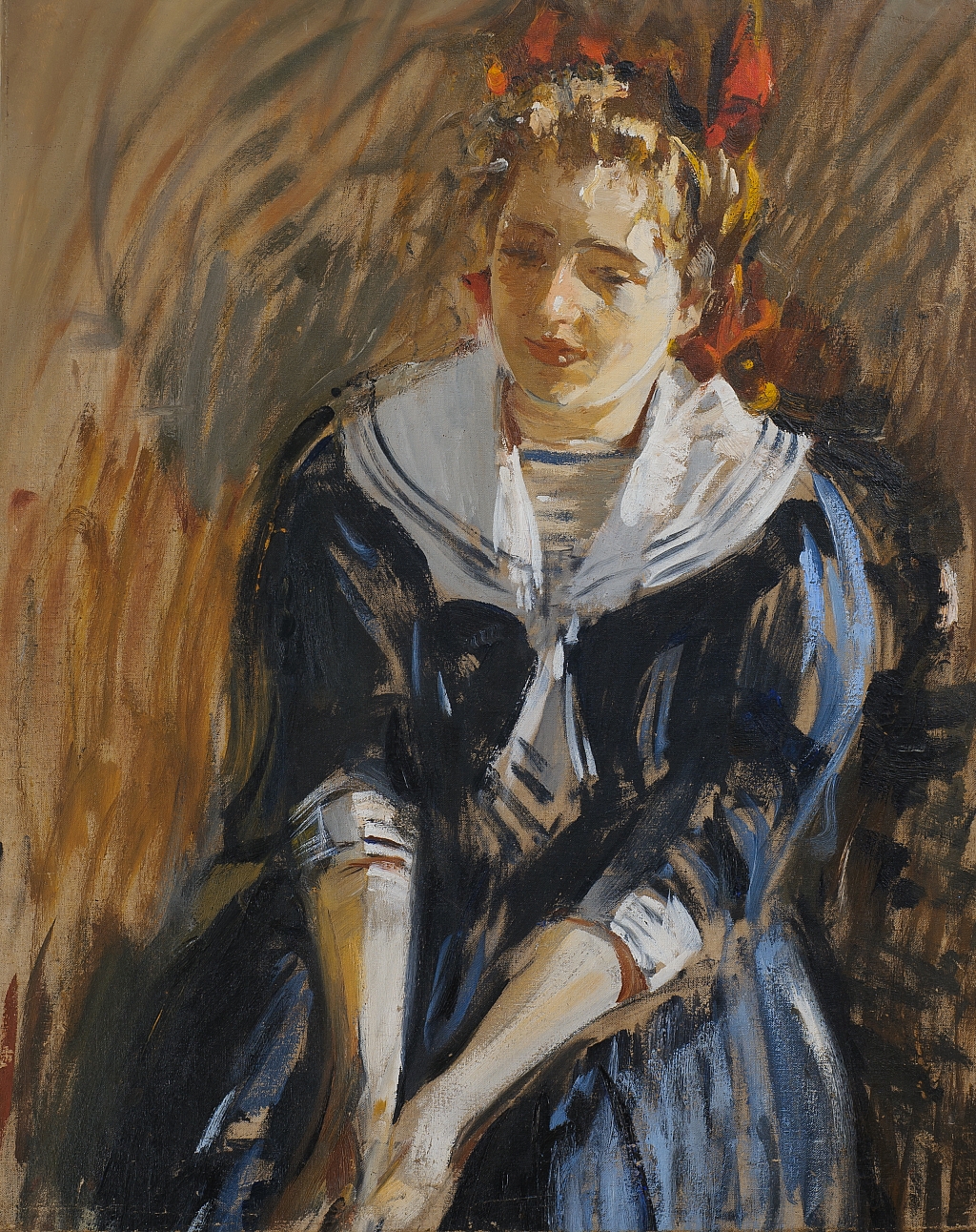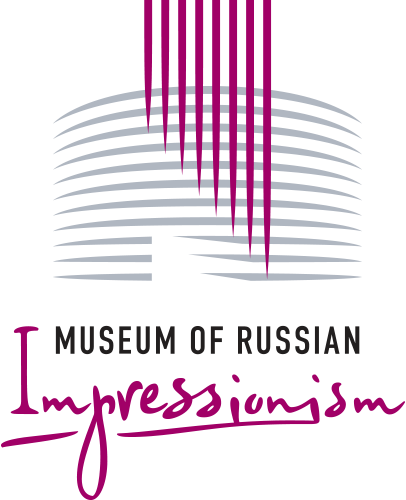
Sonechka: The name of Mikhail Shemyakin’s young model is the only thing that researchers have been able to discover about the girl. We’re left to guess who she was, and to enjoy the beautiful technique exhibited in her portrait, “Girl in a Sailor Suit." Look for a moment at the background - it’s almost impossible to understand just where she may be sitting. The background was executed in wide strokes, while the image of the young girl herself was clearly created with slower, softer and more tender brushstrokes, with both rapture and delight. The composition is unusual, built around a diagonal, and the light forward tilt of the head was a favorite touch of the artist. The bold and generous reflections of light on the girl’s face, and the collar and cuffs of her sailor suit are called “overtones” and emphasize the heroine’s vivacity. “His paintings are filled with grace, rhythm and subtlety. He seeks to grasp man’s nature and inner life with just a few strokes, and he is perfectly precise in approaching, but never crossing the fine line between artistic creation and a piece of craft.” Such was the high opinion of one art critic about Shemyakin. The artist favored portraiture over all other genres, rather like his teacher Valentin Serov. He excelled in it, and received well-deserved recognition from Igor Grabar, the renowned Russian painter, art historian and critic, who said, “a new powerful master of portraiture, a highly professional artist has emerged on the Russian artistic scene. Shemyakin’s portraits have always been skillfully drawn, well composed, and are outstanding with their strong sense of character!” Shemyakin portrayed many famous people of his time, such as Vladimir Filatov, the Russian-Ukrainian ophthalmologist and surgeon, and the Russian botanist and physiologist Kliment Timiryazev. But musicians were far and away his favourite subject, earning him the complimentary nickname from Igor Grabar, “Painter for the Musicians.” Vladimir Mayakovsky, who was also educated in the arts, called Shemyakin a “realist-impressionist-cubist.” Shemyakin inherited his recognizable “wide manner” of painting from his teachers Valentin Serov and Konstantin Korovin, and it would later be recognized as one of the main features of Russian fine arts of the late 19th century.



